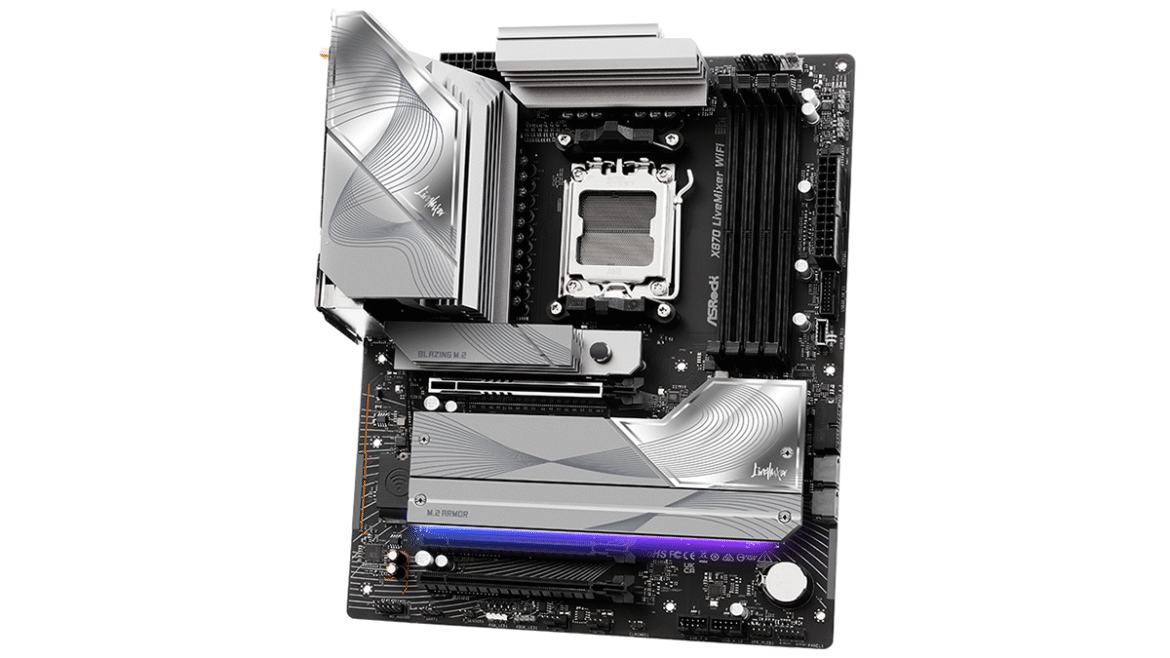- ASRock X870 LiveMixer WiFi debuts with 25 USB ports including USB4
- Supports AMD Ryzen 7000 – 9000 processors with PCIe 5.0 and DDR5 memory
- USB 2.0 reliance weakens long term usefulness despite otherwise strong feature set
ASRock has launched the X870 LiveMixer WiFi, a $229 ATX motherboard aimed at content creators, but one which arrives with an unusual feature: support for up to 25 USB devices.
The board includes dual USB4 ports, one 20Gbps port, 12 USB 5Gbps ports, and 10 USB 2.0 ports.
The presence of so many USB 2.0 connectors will be seen by many as a bit of an oddity in 2025, but if you have a lot of legacy hardware perhaps that’s what you want.
You may like
More is more
In its in-depth review of the motherboard, TweakTown pointed out, “Consider the basics. A keyboard, mouse, printer, headset, external SSD, a DAC, scanner, etc. But think of a user, such as a sim enthusiast with lots of controllers. Perhaps a high-end microphone setup, or a user with capture cards. Having all those ports free for everyday things like multiple flash drives or phones could really come in handy. It’s better to have too many USB ports than not enough, right?”
The X870 LiveMixer supports AMD’s Ryzen 7000, 8000, and 9000 series processors via the AM5 socket and is built on the X870 chipset.
It offers four DDR5 DIMM slots supporting up to 256GB of memory at speeds above 8000MT/s, although AMD notes performance is more balanced at lower speeds around DDR5-6000.
The board comes with one PCIe 5.0 x16 slot for graphics cards, alongside two PCIe 3.0 x16 slots wired at x4.
Storage options include four M.2 slots, two of which support PCIe 5.0 drives, plus two SATA connectors.
For networking there’s a Realtek 5Gb LAN controller and WiFi 7 with Bluetooth 5.4. Audio is handled via a Realtek ALC4082 codec with standard line-in, line-out, and S/PDIF ports.
Rear I/O also includes HDMI 2.1 output and a BIOS flashback button to ease upgrades to future CPUs.
TweakTown summed up saying, “At under $230, the X870 LiveMixer WiFi appears to be the most feature-rich of any board in its price range. I can’t see any that offer that many USB ports, with dual PCIe 5.0 M.2 support and 5G LAN. It’s got a strong VRM and heatsinks to go with it. And it’ll have a good few years of usefulness ahead of it.”
For me, it’s just a shame ASRock wasn’t more forward-looking with its port selection.










